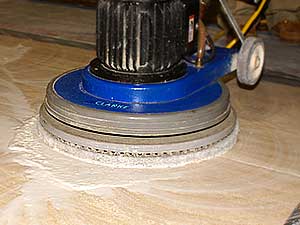We covered marble countertops in our latest blog, but we know a lot of you also have travertine floors.
Not sure if you have travertine?
Most travertine is beige in color. It can have a honed (flat) finish or it can be naturally polished into a medium shine. Other finishes are textured and include “leathered,” “tumbled,” “ cross-cut,” etc.

Travertine can be “filled” or “unfilled.” Let me explain: Travertine naturally has voids (holes) when it comes from the quarry. Travertine voids are sometimes filled at the factory before the stone is installed; this stone is called “filled” travertine.
“Unfilled” travertine does not contain these fills and, therefore, has many visible voids/holes.

A lot of people mix up limestone and travertine. These two stones are related, but you can tell the difference between the two by seeing if the stone has voids or filled voids.
The Marble Institute of America goes even further by explaining that travertine is, “a type of limestone. It is actually the terrestrial (land) formed version of limestone…”
Now that we have established what travertine looks like, how do you maintain this stone?
First off, you need to know that travertine is calcium carbonate based, meaning that it will react (etch) when it comes into contact with acid, ammonia, and alcohol. Etch marks are chemical burns that look like the finish or the shine has been removed from the surface of the stone.
- Avoid cleaning your travertine with vinegar or other acidic products; stick to neutral cleaners such as Lavenet and Lavenet Green.
- Seal travertine once a year with Seal & Go® S or Seal & Go® W to protect your stone from non-acid substances such as oil and grease.

If you have travertine in high traffic areas such as the kitchen or bathroom, you may need to have your stone re-polished or re-honed (sanded) every few years to remove etch marks and fine scratches. Textured travertine can also be honed. Honing helps remove embedded dirt by deep cleaning the surface voids and grout.
If your travertine is filled, sometimes these fills can pop out over time due to general wear and tear. Don’t stress too much about that! During restoration, these voids can be filled in again with a beige-colored epoxy.

